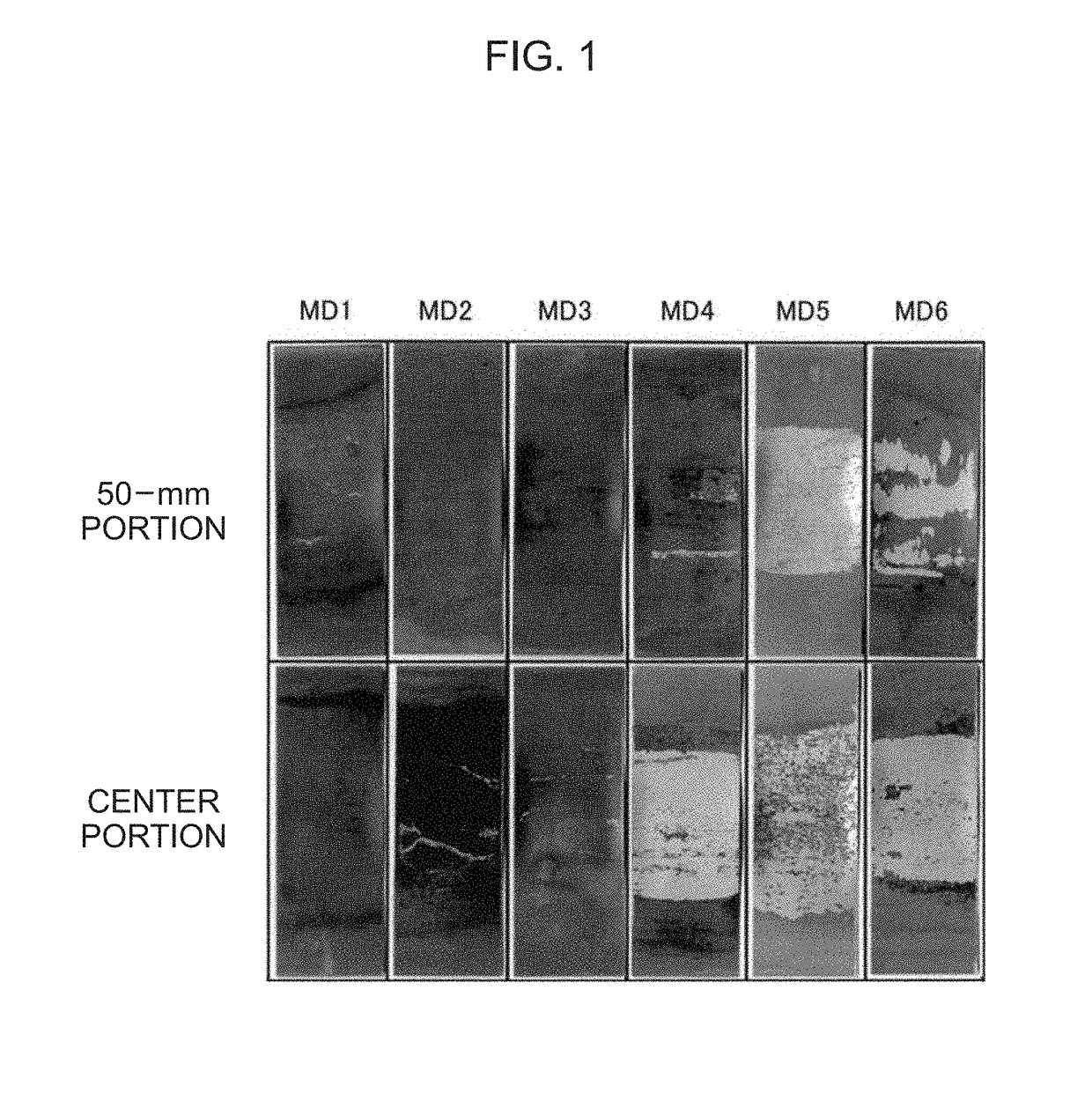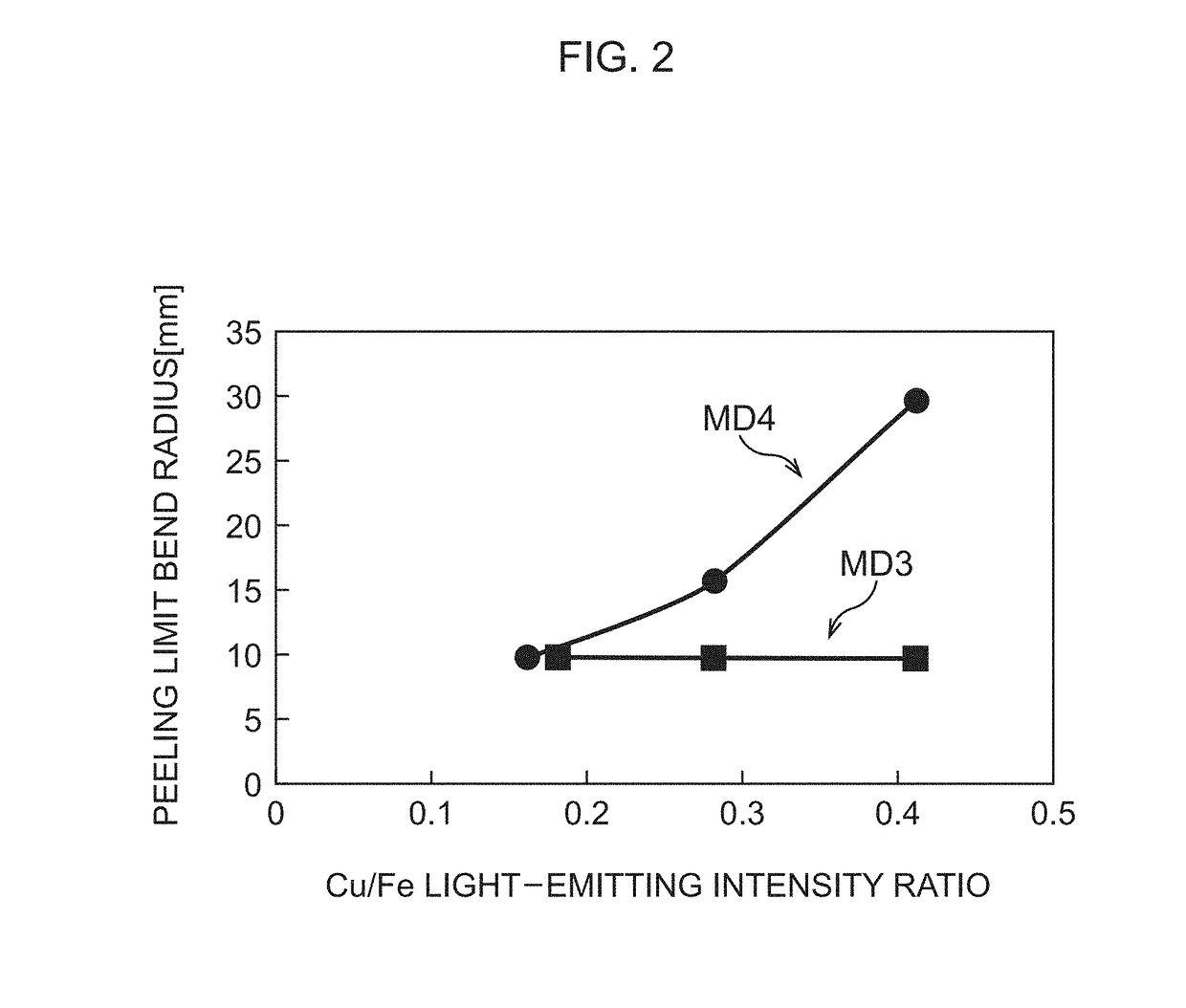Grain-oriented electrical steel sheet and decarburized steel sheet used for manufacturing the same
- Summary
- Abstract
- Description
- Claims
- Application Information
AI Technical Summary
Benefits of technology
Problems solved by technology
Method used
Image
Examples
example
[0156]Next, the decarburized steel sheet for a grain-oriented electrical steel sheet and the grain-oriented electrical steel sheet according to the embodiments of the present invention will be explained concretely while referring to examples. The following examples are merely examples of the decarburized steel sheet for a grain-oriented electrical steel sheet and the grain-oriented electrical steel sheet according to the embodiments of the present invention, and the decarburized steel sheet for a grain-oriented electrical steel sheet and the grain-oriented electrical steel sheet according to the present invention are not limited to the following examples.
[0157]In a vacuum melting furnace, silicon steel materials having chemical compositions of Steel type MD4 to Steel type MD10 illustrated in Table 1 were fabricated, and after being heated at temperatures illustrated in Table 3 to Table 5, slabs were subjected to hot rolling under conditions illustrated in Table 3 to Table 5 to obtai...
PUM
| Property | Measurement | Unit |
|---|---|---|
| Temperature | aaaaa | aaaaa |
| Temperature | aaaaa | aaaaa |
| Temperature | aaaaa | aaaaa |
Abstract
Description
Claims
Application Information
 Login to View More
Login to View More - R&D
- Intellectual Property
- Life Sciences
- Materials
- Tech Scout
- Unparalleled Data Quality
- Higher Quality Content
- 60% Fewer Hallucinations
Browse by: Latest US Patents, China's latest patents, Technical Efficacy Thesaurus, Application Domain, Technology Topic, Popular Technical Reports.
© 2025 PatSnap. All rights reserved.Legal|Privacy policy|Modern Slavery Act Transparency Statement|Sitemap|About US| Contact US: help@patsnap.com



